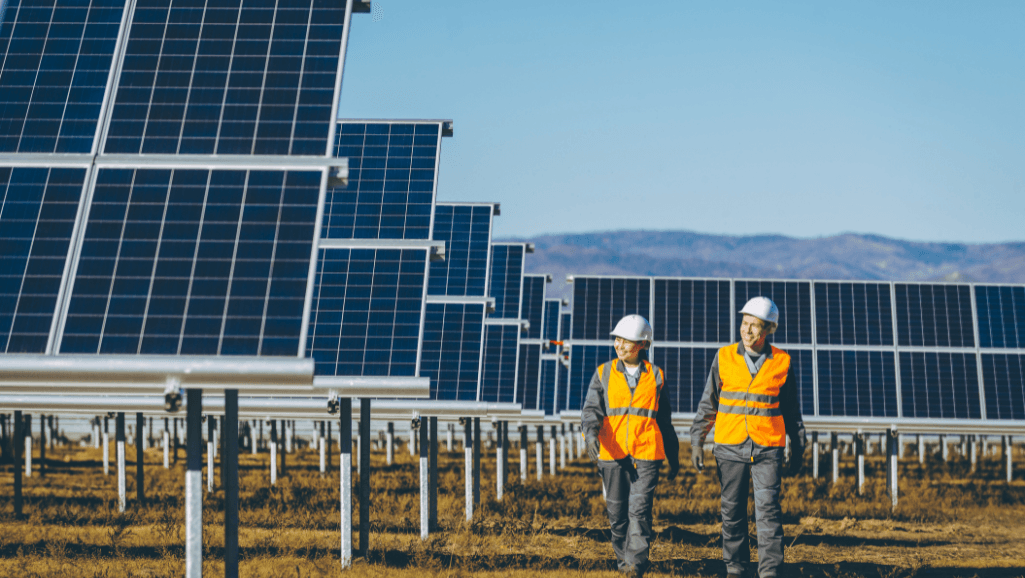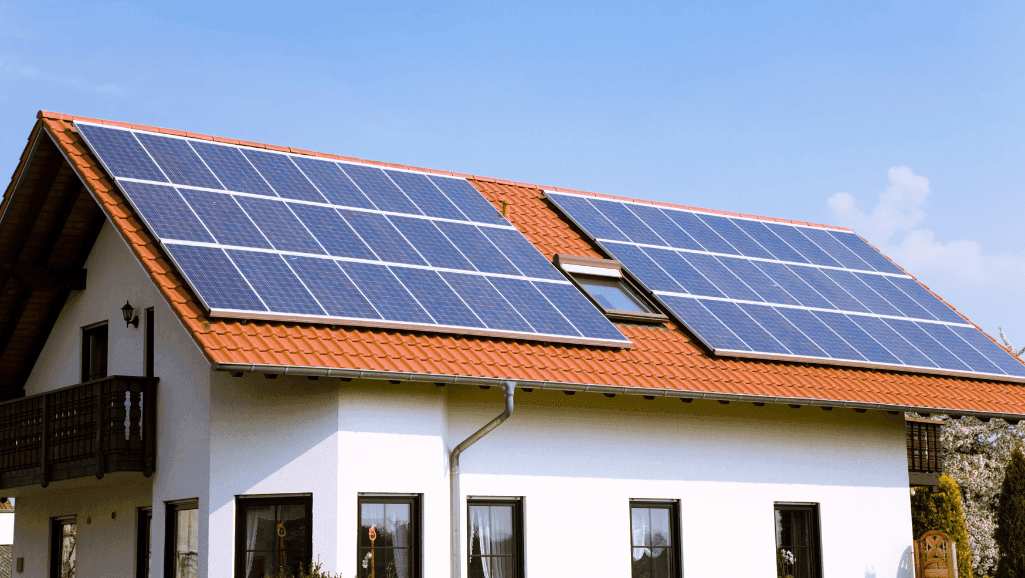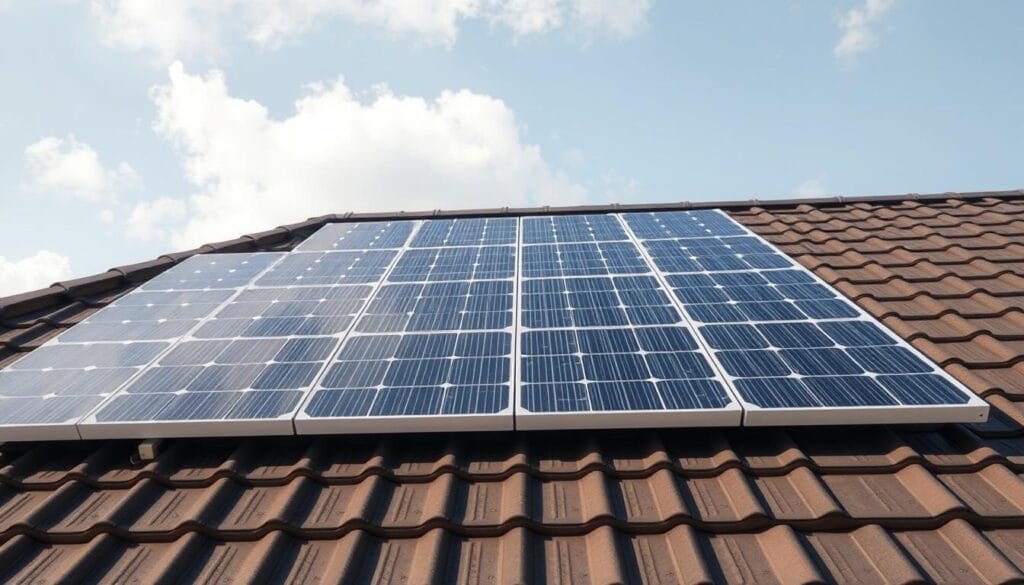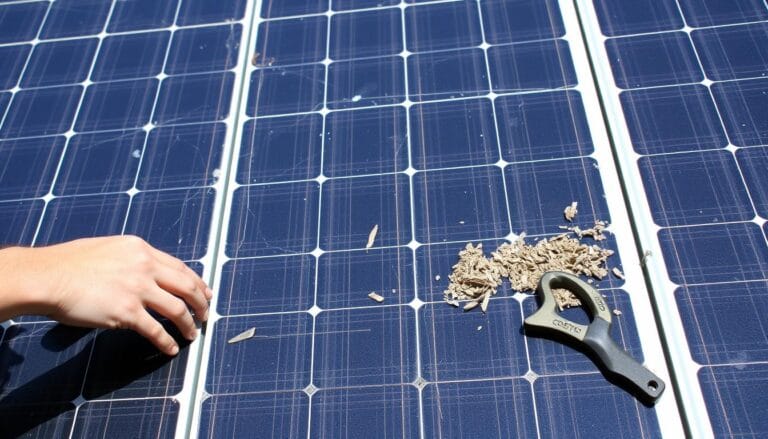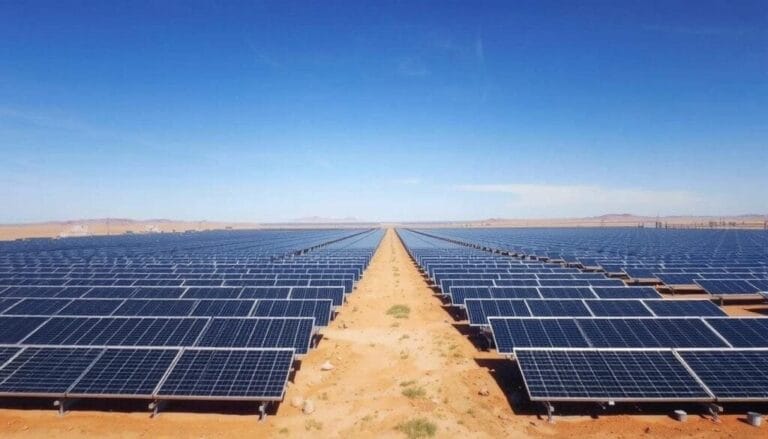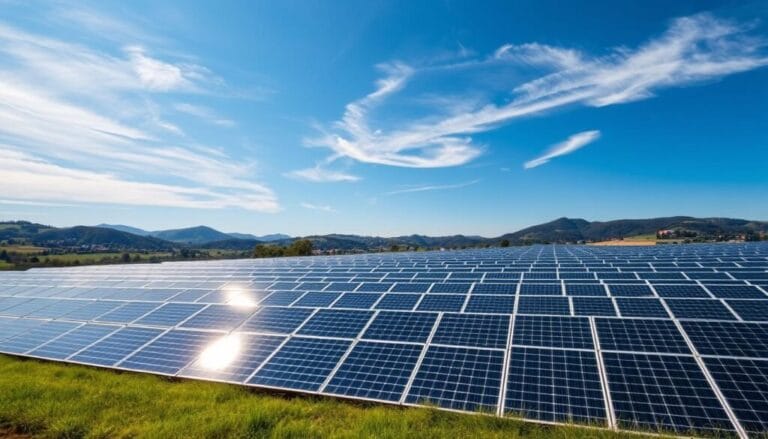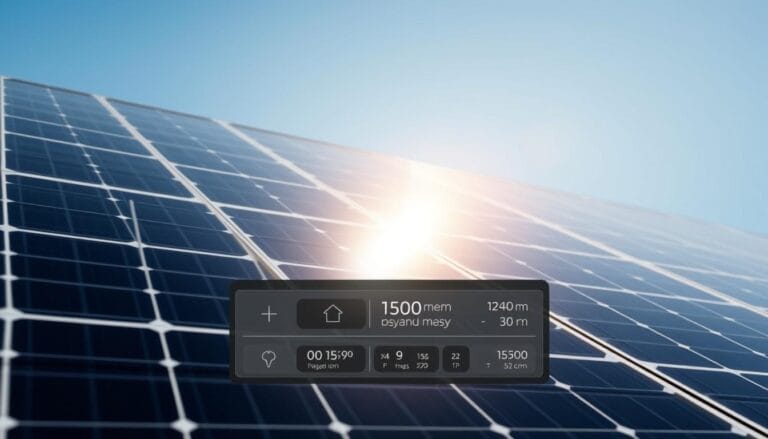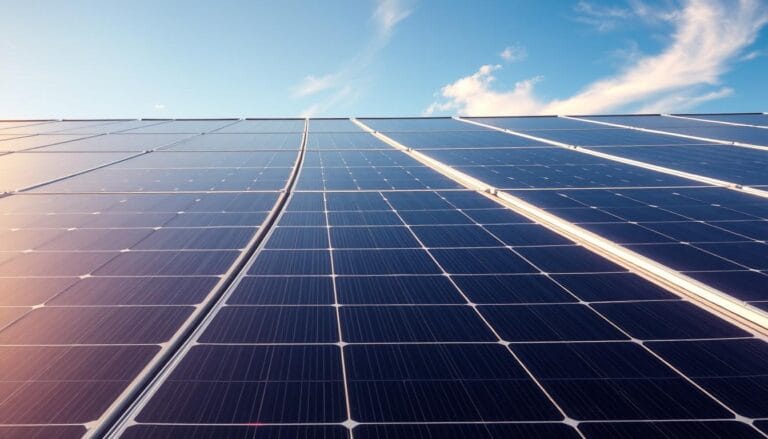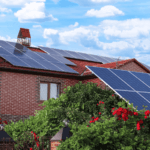xAre home solar panels worth it? This guide answers that question with clear numbers and practical steps. For many U.S. homeowners, a properly sized solar panel system typically pays back in about 7–10 years and then delivers lower-cost electricity for 25+ years under manufacturer warranties and service guarantees.
Typical lifetime savings commonly range from roughly $34,000 to $120,000 over 25 years, depending on system size, local utility rates, and incentives. Rising electricity prices (around a 2.8% annual average used in common projections) make those future savings more valuable today. Ongoing upkeep is modest—industry surveys show typical maintenance running about $140–$180 per year—and modern panels often degrade at roughly 0.5% per year.
Solar panels can also boost resale value. Multiple analyses report resale premiums in the neighborhood of 6–7% or about $3–$5 per installed watt in many markets. After applying the federal tax credit, a competitively priced 12 kW system can land near $20,700 on marketplace listings when average installed rates are roughly $2.55–$3.15 per watt (gross price minus applicable credits). See sources like NREL, SEIA, and IRS for the latest regional averages and tax-credit rules.
This introduction previews a buyer’s guide covering the factors that drive value, current costs and incentives, how to calculate payback and return on investment, financing options, resale effects, and situations when installing panels makes less sense. Next step: collect 2–3 local quotes, check federal and state incentives for your ZIP code, and confirm your roof’s suitability to decide with confidence.
Key Takeaways
- Are home solar panels worth it? For many homeowners who pay average or higher electricity rates and have a usable roof, yes.
- Most properly sized systems reach payback in under a decade and then reduce household electricity costs.
- Expected lifetime savings commonly sit in the five-figure range, but results vary by location and incentives.
- Rising utility rates increase long-term value from day one.
- Low maintenance and long warranties make solar a durable energy investment.
- Compare multiple quotes and confirm incentives to maximize return on investment.
Buyer’s snapshot: Are solar panels worth it for most U.S. homeowners today?
Quick verdict: For many U.S. homeowners who pay average or higher electricity bills and have a usable roof, installing solar panels is financially sensible — most buyers now break even in roughly seven years under 2025 conditions, with lifetime savings often reaching the tens of thousands of dollars.
Why that happens: Upfront costs are offset by decades of lower electricity bills plus incentives (like the federal tax credit) that shorten payback. Without a system, a typical household might spend more than $65,000 on utility bills over 25 years using common escalation assumptions; a competitively priced installing solar project can meaningfully reduce that total.
Site factors matter: roof orientation, shading, and available space change annual production and affect the break‑even timeline. A short site evaluation or production estimate will set realistic expectations.
- Collect multiple quotes and compare per‑watt costs, equipment quality, workmanship, and warranties.
- Confirm local incentives, net metering rules, and the federal tax credit for your situation before you commit.
- If you rent, have a very low electricity bill, or an unsuitable roof, consider community solar or a lease/PPA as alternatives.
Key factors that determine if solar panels are worth it for your home
Local electricity rates, roof fit, and policy rules usually decide the outcome. Start by pulling your last 12 monthly electric bills: higher retail rates and larger usage produce bigger monthly savings and a faster payback for residential solar.
1) Electricity rates and your bill
Why your bill matters: Every kWh your panels produce replaces grid electricity. In high-rate states (for example, many areas of Massachusetts or California), that replacement value is higher and systems often reach break-even faster. Low-rate states can still make sense—especially for large users or where incentives are strong—but expect a longer payback.
Quick example: A household that uses 10,000 kWh/year at $0.29/kWh saves more per kWh than a household at $0.10/kWh, all else equal. Use 12 months of bills to calculate realistic annual savings for your location.
2) Roof, shading, and system-size fit
Most detached single-family homes need in the neighborhood of 15–20 panels to meet typical usage; that usually requires roughly 250–350 sq ft of unshaded roof area assuming common panel sizes (for example, 320–400 W modules). East or west-facing sections can work, but south-facing, unshaded roof surfaces at a moderate pitch produce the most energy in the U.S.
How to check your roof quickly: 1) Measure an unshaded rectangle in feet, 2) multiply length × width to get area, 3) divide usable area by ~17–22 sq ft per typical panel to estimate panel count (panel area varies by model). If shading, orientation, or roof age are concerns, a site assessment is worth the small cost.
Too much shade or too little area may prevent a system from offsetting enough electricity to justify installation; ground mounts and carports are alternatives but typically raise system cost.
3) Location, climate, and local policy
Solar output is higher in sunnier climates and in cooler temperatures (modules perform slightly better when cool). Still, policy often matters more than modest climate differences: net metering that credits excess generation at retail rates, state rebates, SRECs, and local incentives can materially improve the economics of a solar installation.
Practical checklist:
- Collect a site assessment or production estimate (kWh/year) for your roof and climate.
- Use 12 months of bills to right-size your system and avoid oversizing or shortfall.
- Check net metering rules and local incentives (state rebates, sales/property tax exemptions) before signing a contract.
Mini worked sizing example: If you plan a ~6.5 kW system using 360 W panels, you’d need about 18 panels (18 × 360 W = 6,480 W). That typically fits within the 250–350 sq ft guideline but verify with your installer.
Current costs, incentives, and the federal tax credit landscape
Start with typical per‑watt prices and then layer tax credits and rebates to see your real net cost. That step-by-step view makes tradeoffs tangible and helps estimate payback quickly.
Installed prices (typical): Recent national averages put residential installed rates broadly in the $2.55–$3.15 per watt range. That means a common 6.5 kW solar panel system typically costs about $16,600–$20,500 before incentives. Equipment quality, inverter choice, labor, permitting, and roof complexity are the main drivers that push prices up or down.
How the federal tax credit and timing affect your net spend
The federal Investment Tax Credit (ITC) reduces your federal tax liability by a fixed percentage of a qualified solar installation’s gross cost. For many homeowners the ITC can cut net cost substantially (for example, a 30% credit applied to a $20,000 gross install reduces the out‑of‑pocket federal-tax‑adjusted cost by about $6,000). Tax rules and timing details change over time—verify current IRS guidance (and consult a tax professional if needed) to confirm eligibility, phase‑in/out dates, and how to claim the credit.
Net metering, rebates, and other local incentives
Local incentives and utility rules often move the needle more than small differences in panel performance. Net metering that credits excess generation at or near retail rates increases annual savings; where net metering credits are limited, incentives such as state rebates, performance payments, SRECs, sales‑tax exemptions, and property‑tax exclusions can still materially improve the economics.
- Compare quotes: get multiple bids to find competitive per‑watt pricing and to see different equipment/inverter options.
- Factor ongoing costs: include estimated maintenance (~$140–$180/year) and optional monitoring or service plans ($150–$500/yr if third‑party).
- Check incentives: stack the federal tax credit with state and utility incentives to lower net cost and improve payback — use DSIRE or your state energy office for up‑to‑date listings.
Worked examples (quick):
- 6.5 kW system at $2.80/W → gross = $18,200. With a 30% ITC, theoretical federal tax reduction = $5,460 (net federal-tax‑adjusted cost ≈ $12,740).*
- 12 kW system at $2.75/W → gross = $33,000. After a 30% ITC, federal reduction = $9,900 (net ≈ $23,100).*
*These examples illustrate basic arithmetic; final out‑of‑pocket cost depends on available state/utility incentives, local taxes, permitting fees, and your ability to use the tax credit. See IRS and DOE resources or consult a tax advisor for precise eligibility and claiming instructions.
Solar payback period and ROI: how to calculate your break even
Estimating years to payback gives you a clear financial target. Use your real bills, local incentives, and a conservative production estimate to avoid surprises.
Simple formula:
Payback period = net system cost ÷ annual savings.
Worked example (step-by-step)
Begin with typical numbers so you can reproduce the math.
- Gross installed cost: $30,000
- Federal tax credit (example): 30% of gross → $9,000
- Net federal‑tax‑adjusted cost ≈ $21,000
- Estimated annual electricity bill savings: $3,000
Payback = $21,000 ÷ $3,000 ≈ 7 years. Without the tax credit, payback would be $30,000 ÷ $3,000 = 10 years.
Small reference table
(Illustrative — replace with your local numbers)
- Gross cost → Incentives → Net cost → Annual savings → Payback
- $18,200 → 30% ITC ($5,460) → $12,740 → $2,500 → ≈ 5.1 years
- $33,000 → 30% ITC ($9,900) → $23,100 → $3,000 → ≈ 7.7 years
Typical ranges and what shifts them
Most homeowners see payback windows in the 6–10 year band, though realistic ranges can run from roughly 4–13 years depending on installed costs, incentive stacks, production, and net metering rules. High retail electricity rates and strong local incentives shorten payback; low rates and weak credits lengthen it.
Degradation, maintenance, and rate escalation
Factor small annual impacts into long‑term ROI: panels typically degrade about 0.5% per year (modern warranties commonly guarantee low annual degradation), and routine upkeep averages roughly $140–$180 per year. Utilities historically raise rates by about 2.8–3% per year in many projections; that escalation increases the value of the solar energy you produce over time.
Sensitivity and realistic adjustments
Run quick sensitivity checks when you model payback: change installed cost ±20% and utility escalation ±1% to see how payback shifts. Also include expected inverter replacement (~year 12–20) and any monitoring or warranty plan fees for a fuller 25‑year ROI picture.
Practical next step: gather 12 months of bills, request production estimates from two or three local installers using your address, and plug those numbers into the simple formula above to get your personalized payback and return on investment.
are home solar panels worth it in your situation? Real-world examples
Local price signals and policy rules tilt the results. Two identical projects can produce very different payback timelines when placed in different states because electricity prices, net metering, and local incentives change the value of each kWh your panels generate.
Example assumptions (common starting point)
To make the examples reproducible, assume an $18,000 gross installed cost before incentives, a 30% federal tax credit, and an annual system production that offsets a household’s electricity use as described below. Adjust the numbers with your installer’s production estimate and local retail rates.
High electricity rates (Massachusetts)
Massachusetts example: Using a residential rate near $0.29/kWh and the $18,000 gross install, the 30% ITC reduces federal-tax‑adjusted cost by $5,400 (net ≈ $12,600). With higher per‑kWh savings, that project can reach payback in roughly 5–6 years. Assuming ~0.5% panel degradation and modest annual maintenance, modeled 25‑year savings can approach ~$60k under a ~3% utility escalation assumption (use your production estimate for precise math).
Lower electricity rates (North Dakota)
North Dakota example: At about $0.10/kWh, the same $18,000 gross system (30% ITC → $5,400) yields a much longer payback — often in the 12+ year range — because each kWh the system produces replaces lower‑cost grid power. The lifetime outcome generally remains positive, but savings accumulate more slowly without strong incentives or higher personal usage.
Why the gap is large: Different retail electricity rates and net metering rules create the biggest divergence in annual savings. Where net metering credits excess generation at near‑retail value, annual savings will be significantly higher than in utilities that credit at avoided‑cost or offer limited carryover.
Quick comparison (illustrative):
- Gross cost: $18,000 → ITC (30%) = $5,400 → Net ≈ $12,600
- Massachusetts (~$0.29/kWh): higher annual bill offset → payback ~5–6 years; larger 25‑yr savings.
- North Dakota (~$0.10/kWh): lower annual bill offset → payback ~12+ years; positive but slower savings growth.
Takeaway: Use local retail electricity rates, your installer’s production estimate (kWh/year), and your 12 months of bills to model payback. If your roof or local policies look unfavorable, consider community solar or ask installers to show scenarios with and without aggressive net metering credits.
Next step: plug your ZIP code into a production/incentives estimator or request a site‑specific proposal from two or three installers that includes annual kWh estimates, assumed retail crediting (net metering), and a 25‑year savings projection so you can compare side‑by‑side.
When installing solar panels makes less sense
Before you sign, check whether site limits or weak policy support will erase expected savings. Small electric bills, an unusable roof, or plans to sell soon can push payback well beyond a comfortable horizon — in those cases, alternatives like community solar or waiting for a roof replacement may be better.
Low electric spend, unsuitable roof, or plans to sell
General guidance: If your average electricity bill is very low (for example, under about $75/month in many areas), the monthly savings from solar may be too small to justify the installation cost unless you have unusually high usage patterns or strong local incentives. That $75 threshold is a rule-of-thumb — use your local rates and 12 months of bills to model your situation.
Rooftop limits matter: an old roof needing replacement, heavy shade, limited usable area, or poor orientation reduce production and lengthen payback. Ground mounts and carports are options but typically increase system costs due to additional racking, trenching, and permitting.
If you plan to sell within a few years, weigh ownership structure: fully owned systems transfer value more cleanly than leases or PPAs, which can complicate transactions or require contract assumption/payout.
Limited incentives, weak net metering, or “too good to be true” quotes
Weak net metering (credits at avoided-cost rather than retail), few state or utility rebates, and little local support can stretch payback significantly. Be skeptical of offers that promise “free” panels or push for immediate signing — those are common red flags.
Red-flag checklist for offers and contracts
- High-pressure sales tactics or “today only” deals.
- Unclear ownership terms (who owns equipment, who gets credits).
- Vague warranty or performance guarantees without written detail.
- Quotes that are far below local market per‑watt averages with no clear explanation.
Decision flow (quick): If A) monthly bill > your local threshold and B) roof is usable and C) incentives/net metering are reasonable → residential solar likely worth investigating further. If any condition fails, consider community solar, a delayed install after roof work, or getting more competitive bids.
Where to look for alternatives: Community solar programs let renters or owners with poor roofs buy or subscribe to offsite solar and still get electricity savings. Check your utility’s website or state energy office (DSIRE) for programs in your area.
Checklist before you sign:
- Confirm 12 months of bills to test estimated savings.
- Get at least two or three bids to benchmark per‑watt costs and warranties.
- Verify net metering details and local incentives in writing.
- Replace an aging roof before installation to avoid removal and re‑install costs.
Financing your solar energy system and maximizing return on investment
How you pay for a system often determines whether you capture full incentives and long‑term savings.
Cash purchase vs. loan vs. lease/PPA
Cash purchases usually deliver the highest lifetime savings: you own the solar panel system outright, can claim the full federal tax credit (if you have sufficient tax liability), and typically qualify for most state and utility incentives.
$0‑down and other loans reduce upfront cost and can produce immediate monthly bill relief. Loans let you keep the tax credit and many incentives, but interest increases the effective system cost and can extend the payback period depending on APR and term.
Leases and PPAs (third‑party owned systems) minimize or eliminate upfront expense and often lower monthly bills by 10–30% in advertised deals, but customers generally cannot claim the federal tax credit and many local incentives — and leases may complicate resale.
Compact comparison (high level)
- Cash: Pros — highest lifetime savings, full incentive capture; Cons — largest upfront outlay.
- Loan: Pros — spread cost, still claim ITC if you’re the owner; Cons — interest increases total cost (compare APRs and term).
- Lease/PPA: Pros — low/no upfront cost, convenience; Cons — limited incentives, potential resale complications, lower lifetime ROI.
How financing changes payback and savings
When modeling ROI, include financing costs, incentive eligibility, and residual system value. Interest raises effective system costs and can add several years to payback versus a cash purchase, while loss of incentives under a lease materially reduces long‑term savings. Always compare modeled 25‑year outcomes (or your expected ownership period) for cash vs loan vs lease using realistic interest and inflation inputs.
- Model different scenarios: cash vs loan vs lease over 25 years with assumed APR, term, and inverter replacement.
- Confirm who claims incentives in your contract — only owners typically qualify for the ITC and many state/utility rebates.
- Get multiple financing offers to compare APR, fees, prepayment terms, and the true monthly cashflow impact.
Should you add a battery? TOU rates, outages, and net metering limits
Batteries increase upfront costs but add resilience during outages and enable time‑of‑use (TOU) arbitrage when utilities charge higher prices for peak electricity. In areas with weak net metering, storage raises self‑consumption (the share of produced energy you use directly) and can materially improve financial returns.
Storage economics depend on local TOU differentials, outage risk, storage incentives (some states/municipalities offer storage rebates), and battery lifespan/cycle warranties. Model the combined solar + battery system to see whether the incremental cost delivers acceptable additional savings or value for resilience.
Finance checklist (before you sign):
- Confirm whether you will own the solar panel system and thus qualify for the federal tax credit and local incentives.
- If using a loan, compare APR, loan term, fees, and any prepayment penalties.
- Ask installers for 25‑year cashflow models for cash vs loan vs lease that include incentives, maintenance, inverter replacement, and optional battery costs.
- Check eligibility to use the ITC — if your federal tax liability is too low, ask a tax advisor about options (some incentives have limited transferability, but rules vary).
Practical next step: request financed and cash quotes from two or three installers, ask for the underlying assumptions (gross cost, incentives, production estimate, loan terms), and compare modeled savings and payback to choose the financing approach that maximizes your long‑term investment.
Will solar panels increase home value and help you sell your home?
A well-documented, owned system can be a clear selling point in many markets. Multiple studies and market reports find average resale premiums commonly near 6–7% or roughly $3–$5 per installed watt in markets with strong utility rates and buyer demand. For a typical homeowner this can translate into several thousand dollars—often roughly $10,000–$20,000 depending on system size and local market conditions—helping the installation pay back faster at the point of sale. (Cite local appraisal guidance and recent studies such as those from NREL, Lawrence Berkeley Lab, or local real estate analyses when available.)
Typical premium ranges and what buyers value
Buyers tend to pay a premium for predictable, lower operating costs and for modern, well‑installed equipment. Appraisers and buyers look for documented production, long remaining equipment warranties, tidy conduit runs, and evidence of recent maintenance or monitoring.
- Premiums: Expect either a percentage boost to sale price or a per‑watt adjustment in appraisals, depending on the appraiser and local comps.
- Buyer priorities: written production history (kWh/year), inverter and panel warranties, and clear service records.
- Market effect: areas with high electricity prices or strong environmental demand typically show stronger buyer interest and higher premiums.
Ownership vs. lease implications at resale
Owned systems transfer value directly—buyers inherit the future energy savings and the ability to claim any applicable incentives tied to ownership. Leases or PPAs complicate resale: contracts may need to be assumed by the buyer, paid off at closing, or otherwise negotiated, which can reduce the pool of interested purchasers or require price adjustments.
- Save production reports, inverter history, and warranty paperwork to streamline appraisal and buyer due diligence.
- Check for local property tax exemptions or assessment rules that preserve gains without increasing annual taxes (these vary by state and locality).
- Confirm roof condition, tidy conduit and mounting appearance, and have a brief maintenance summary ready to share with buyers.
For sellers — quick checklist: compile 1) annual kWh production reports, 2) copies of panel and inverter warranties, 3) maintenance/inspection records, and 4) documentation of any incentives or SRECs received. Presenting these items in the listing or during showings helps buyers see the system as an asset rather than a liability and can support requests for a higher home value.
Conclusion
For many U.S. homeowners, a well‑planned solar installation pays back in roughly 6–10 years and delivers meaningful 25‑year savings when you combine the right system size, competitive pricing, and available incentives.
Before you sign any contract, confirm current incentive rules — including the federal tax credit, net metering policies, and state or utility rebates — since these factors materially shape your upfront cost and long‑term return. Authoritative sources to check include the IRS (for the ITC), DSIRE or your state energy office (for local incentives), and your utility (for net metering and interconnection rules).
Protect your investment with durable equipment, clear warranties, and a reputable installer. If you face high time‑of‑use rates, frequent outages, or limited net metering, consider adding storage — it raises initial costs but can increase resilience and long‑term value in the right markets.
Action step: Gather two to three local quotes, ask each installer for a production estimate and a 25‑year cashflow model (show gross cost, incentives, net cost, and expected annual savings), compare per‑watt pricing and warranty terms, and choose the partner who provides clear assumptions and documentation. Use an online ZIP‑code incentives search or request a site‑specific proposal to get accurate numbers for your home.



